Fishing for Sharks in the Gulf of Mexico
For many biologists, extended periods of time in the field with your study species are rare. In September 2019, I spent two weeks aboard a ship in the Gulf of Mexico volunteering with the National Oceanic and Atmospheric Administration’s (NOAA) shark team. Every summer, NOAA conducts surveys of United States waters in the Gulf of Mexico to collect data which will help inform fisheries policies. NOAA also provides opportunities for scientists to assist with these surveys and collect data for their own research. My research uses genomic data to assess movement and connectivity of blacktip sharks throughout the Gulf of Mexico so the opportunity to participate was not to be missed.
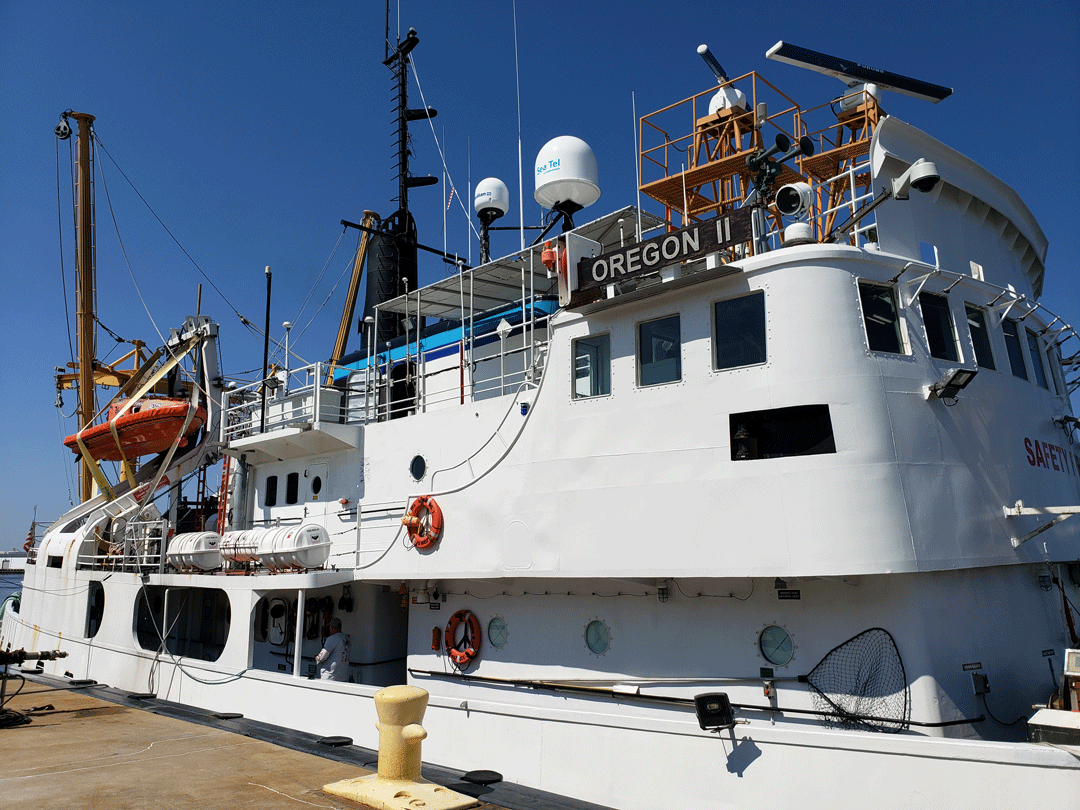
The Oregon II before departing Pascagoula, MS. Photo © Dominic Swift
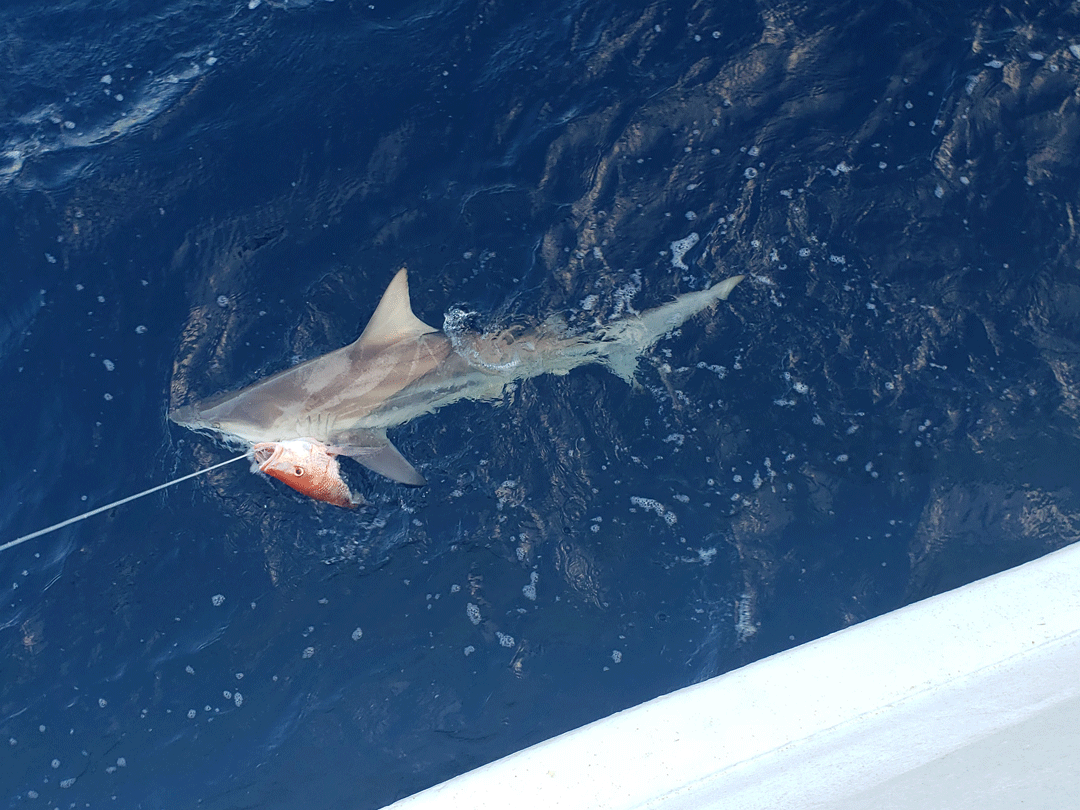
A red snapper which took the bait turned into bait for a blacktip shark. Photo © Dominic Swift
After departing Pascagoula, Mississippi, the NOAA research vessel Oregon II sailed west towards Brownsville, Texas, where fishing would start. Prior to fishing, volunteers were briefed on the deployment and retrieval of fishing gear and what shark species we might catch. In addition to blacktips, we could expect to catch sharpnose and blacknose sharks, as well as larger species like bull, hammerhead, and tiger sharks. The trip towards Brownsville also allowed time to adjust our sleeping patterns to a new schedule starting at 12am and finishing at 12pm. At first, this was difficult, but we were fortunate every day to watch the sunrise and avoid the hottest weather in the early afternoon.
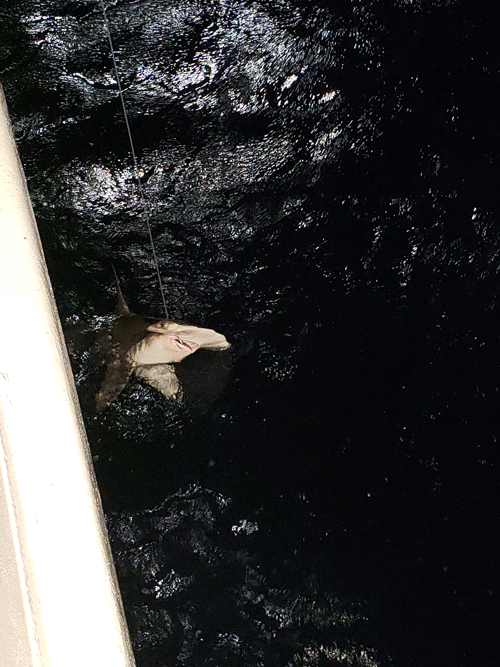
A scalloped hammerhead shark is hauled from the dark depths. Photo © Dominic Swift
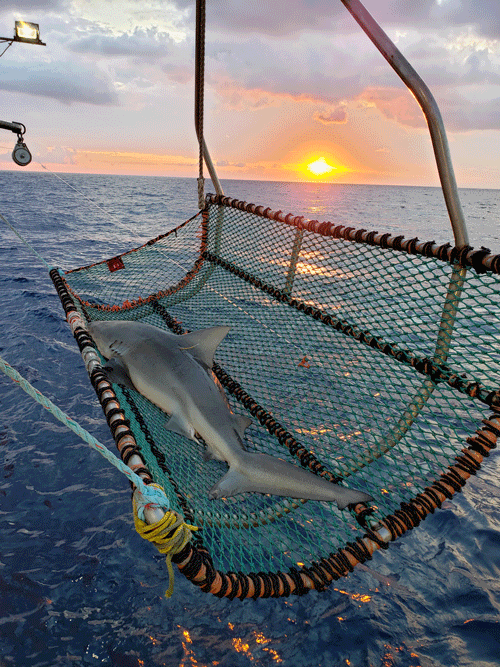
A male bull shark is returned to the water via the cradle. Photo © Dominic Swift
As we approached each fishing station, we prepared for deployment by baiting hooks with mackerel and recording environmental data such as wind speed, water temperature and salinity. As soon as the ship arrived at the station, a floatation device was attached to the main fishing line and thrown off the stern, causing the line to flow out of the reel and into the water behind the ship. 100 baited hooks were attached to the line at regular intervals before it was cut from the reel and a second floatation device attached and thrown overboard to complete the deployment.
One hour after deployment, the fishing line was collected from the water, reattached to the reel and retrieved. As the line came aboard, flashes of colour appeared in the water as hooked sharks were hauled towards the ship. The majority of sharks were small enough to be brought aboard by hand where they were measured, weighed, and sexed, before the hook was removed and a sample of tissue collected for genetic analysis. All sharks were also tagged and released back into the water. Occasionally, a crane-operated cradle had to be used to hoist larger sharks which were too large to be brought aboard. This included several large bull and hammerhead sharks, as well as a 3-metre tiger shark. In total, more than 20 blacktip sharks were caught. The tissue samples collected will be used to compare these sharks to blacktips sampled in other regions of the Gulf of Mexico to assess their movement and connectivity.

Dominic assists NOAA’s shark team as they haul a blacktip shark using the cradle. Photo © Ryan Mortimer
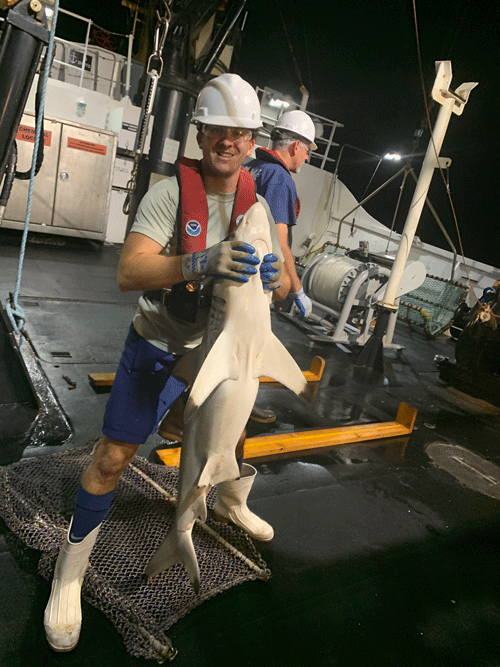
After weighing a female blacktip shark, Dominic picks her up by the mouth to return her safely to the water. Photo © Ryan Mortimer
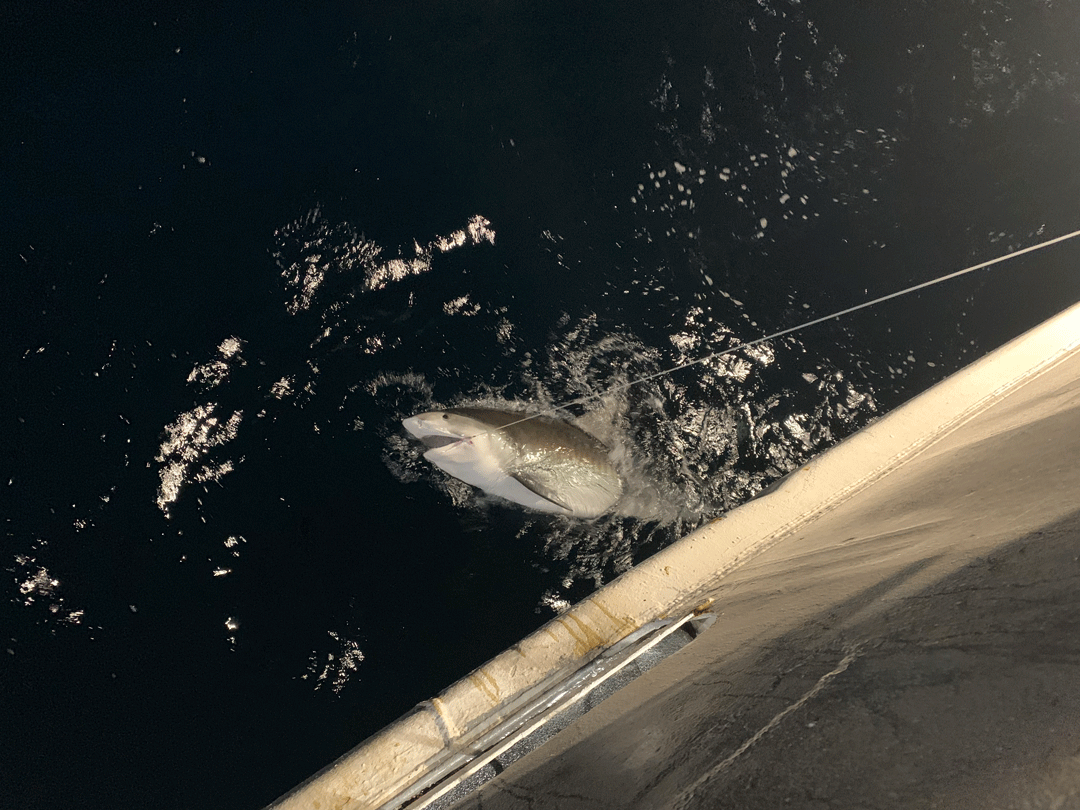
A tiger shark is secured to the ship before being hauled up by the cradle. Photo © Jillian Swinford

After data collection and tagging, a tiger shark is returned to the water by the cradle. Photo © Jillian Swinford
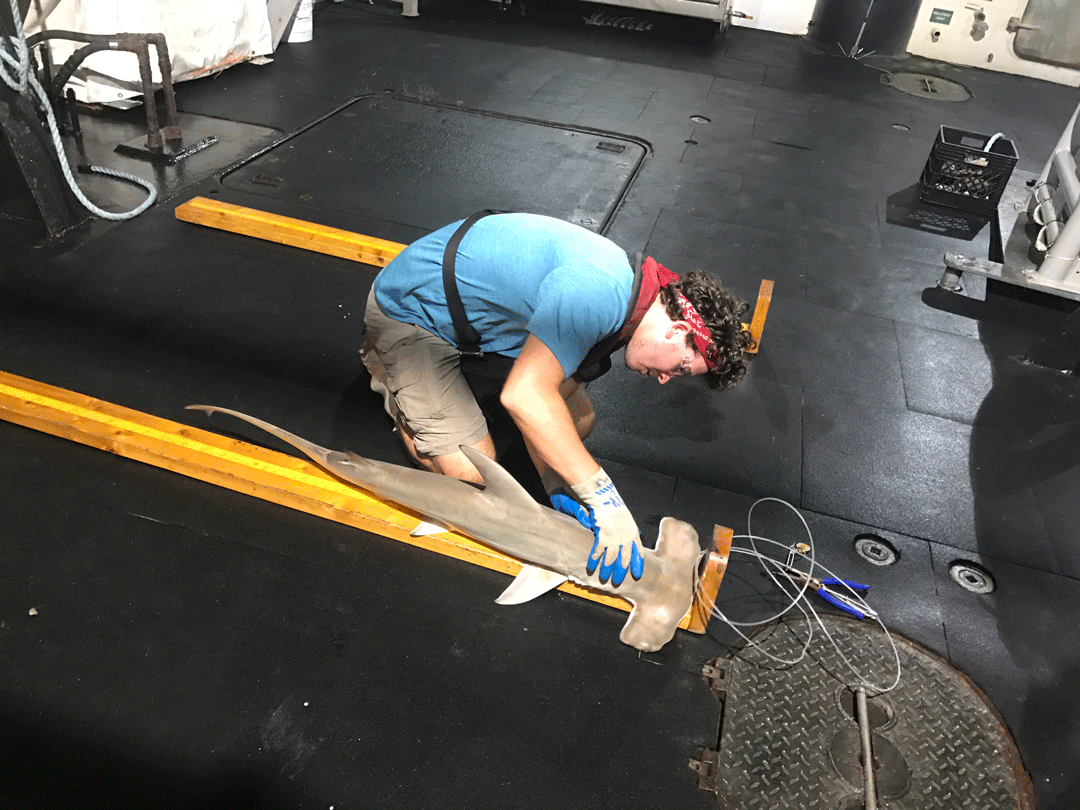
Dominic measuring and removing the hook from a juvenile great hammerhead shark. Photo © Jillian Swinford
